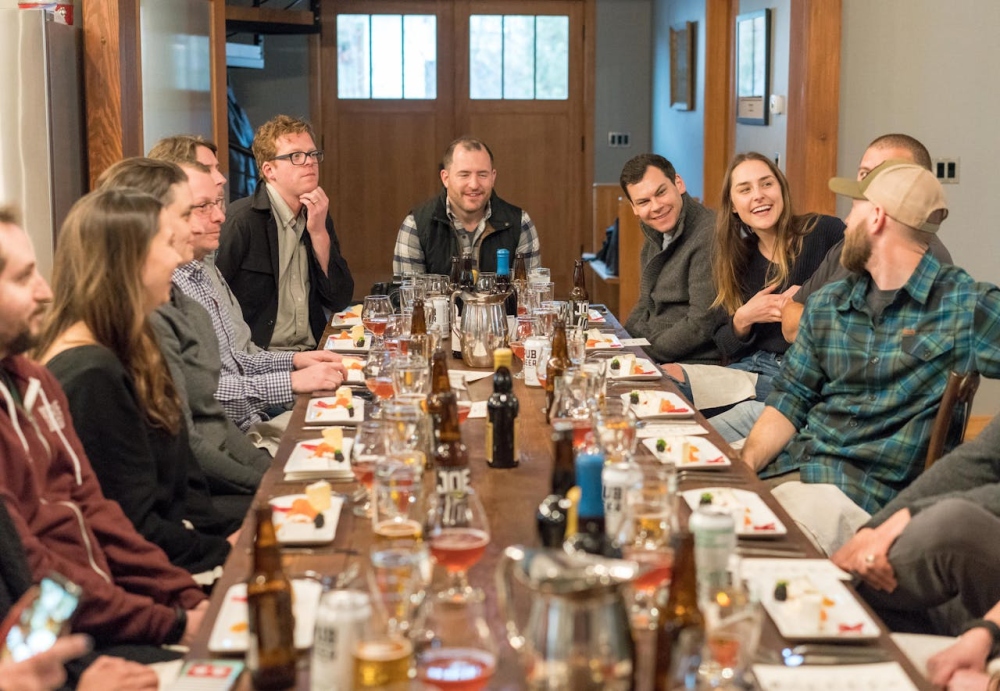From Denis:
In Part 1 of this series on cooking, I argued that: In preparing and serving breakfast, our Lord forever sanctified the act of cooking for hungry people. So, do we want to be like Jesus? Then cook food and serve it. You can read Part 1 here.
This second reflection follows quite naturally: Cooking is an essential and significant part of Christian faithfulness. As finite creatures we need nutrition and so if we want to serve our friends and neighbors in love, that can and should include need to cook food and serve it to them.
If we begin at the beginning—always a good place to start—we learn that God provided food for his creatures as part of created reality. “And the Lord God planted a garden in Eden, in the east… Out of the ground the Lord God made to grow every tree that is pleasant to the sight and good for food” [Genesis 2:8-9]. Eating is essential to our humanness, and, as I will reflect on in a later part of this series, will continue on into the New Creation. This means that preparing and serving food is not a secondary, less spiritual, less admirable task, but one that has both significance and deep meaning. This is why the people of God have always celebrated his grace in feasts and meals, such as the Passover and the Eucharist. And from experience we know that conversation can flourish around a table, and relationships deepened.
Or reread the letter the prophet Jeremiah wrote to the Jewish exiles that had been dragged into exile to Babylon [Jeremiah 29]. He instructed them to be faithful in the ordinary and the routine of life. They were to “plant gardens and eat what they produce” [29:5]. There is no hint they were to mount campaigns or develop escape plans; quite the opposite: they were to demonstrate their faithfulness to the true and living God by, among other ordinary things in exile in Babylon, preparing and cooking meals.
Or consider what may be the most intimate epistle between writer and recipient in the New Testament, 3 John. It’s short, merely fifteen verses, and isn’t explicitly about fine points of doctrine, so that may be why it’s often ignored. It shouldn’t be.
St John writes to “the beloved Gaius” [v. 1]. There is controversy in the church, and the apostle singles Gaius out for praise. “I was overjoyed,” St John writes, “when some of the friends arrived and testified to your faithfulness to the truth, namely how you walk in the truth.” What Gaius was doing was welcoming traveling Christians, caring for them with warm hospitality, and sending them on their way. Another member of the church, whom the apostle sharply criticizes, Diotrephes, refuses to welcome them [v 9-10] and expels any member that serves them. The fact that an apostolic epistle, written to an individual expressing gratitude for their faithfulness in hospitality—which naturally includes cooking and serving meals—should be reason for joy. Cooking is an essential and significant part of Christian faithfulness. So, do we want to be faithful? Get to cooking.
I do not mean to suggest that we must all cook or cook equally well or often. We have different gifts and should honor the Holy Spirit’s distribution of them. Over the years I have learned to cook a few simple meals, but Margie remains the chef in The House Between. She even has a Scott County Fair First Place blue ribbon plus Grand Champion ribbon (for her strawberry-rhubarb pie, which I would never attempt) to prove it.
This is one more reason why living in community is such a blessing. We can share one another’s gifts, and together demonstrate a fuller picture of faithfulness. As well, meals need not be complex or difficult to be satisfying. After all, Jesus’ breakfast on the beach was hardly a complicated menu. I’ll circle around to this idea later in this series.
From Margie:
This is one of my favorite ways to use whole green chile. (Yes, this is the correct spelling.) Although I love the way chile rellenos are typically made (stuffed, battered, and fried) baking them this way preserves the intense flavor and is less complicated. When served to guests, I find that even if the casserole is a little spicy hot, most can’t resist going back for more.
Chile Relleno Casserole
Whole green chiles canned or frozen (8-12 depending on size), Use Poblano or, for a little hotter version, Anaheim.
1 lb Monterey Jack cheese
¼ lb mild cheddar cheese, grated
5 large eggs
1/3 cup milk
¼ cup flour
½ tsp salt & pepper
paprika
Grease a 3-4 quart casserole dish.
Drain the chiles if using canned. If using fresh chile, first blister the skins under the broiler. Keep turning them until they are uniformly blackened. Remove them from the oven and close them in a paper bag for about 10 minutes. Then, run them under cool water and the skins will slip off easily. In both cases, fresh or canned, make a slit down the side and strip out the seeds.
Preheat oven to 350 degrees.
Place a thick strip of Monterey Jack cheese inside each chile. Fold the edges over to encase the cheese and place them side by side in the baking dish. Some may be layered on top of one another.
In a mixing bowl, lightly whisk the eggs. Add milk and mix. Add flour, salt, and pepper. Whisk until most lumps are gone. Pour the batter over the chile. Sprinkle cheddar cheese and paprika on top.
Bake for 45 minutes or until top is puffed and golden.
Serves 4.
[P.S. For more—many more—recipes, look in Margie’s Place Trilogy, which can be ordered from Hearts and Minds Book Store]
Photo credit: Photo by ELEVATE (https://www.pexels.com/photo/group-of-people-sitting-on-dining-table-1267321/)



